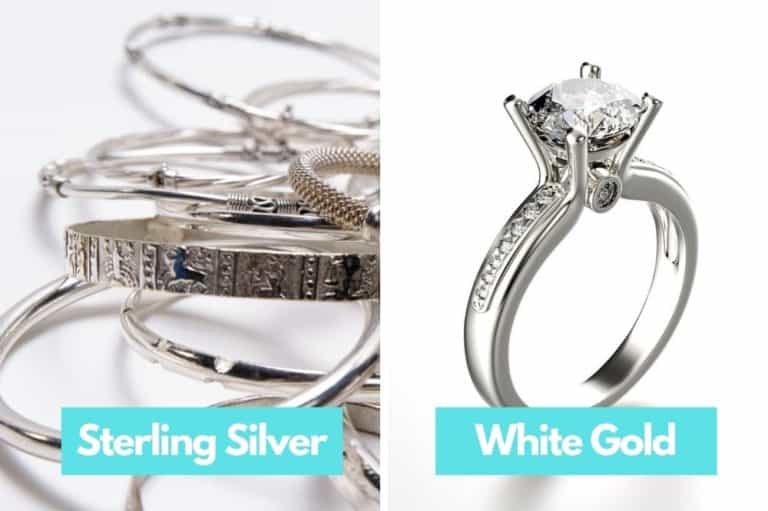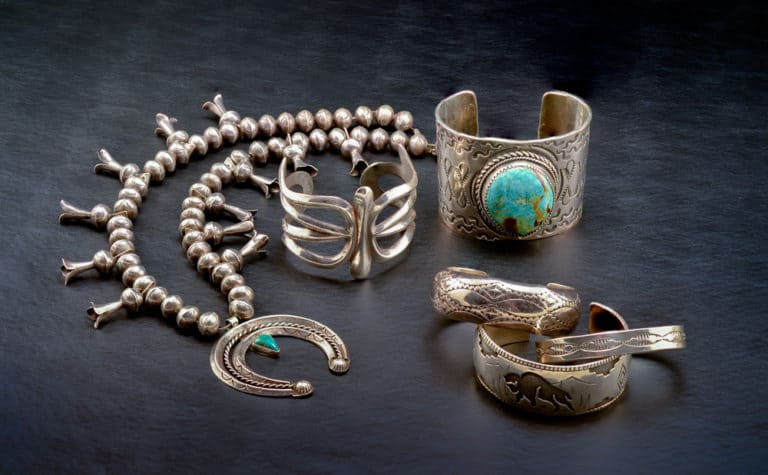
Are you looking to learn how to silver plate jewelry? This is the place to be. Whether you are looking for a new hobby or ways to make your jewelry look great again, silver plating requires attention.
However, it doesn’t have to be a boring task or even a chore. There are different methods to do this. So choose that which appeals most to you.
Methods of Silver Plating Jewelry
There are 2 main and distinct methods of silver plating jewelry and they are:
- Immersion plating
- Electroplating
For immersion plating, you can do it at home. This is because it involves the use of a solution so is practically harmless.
But for electroplating, I don’t advise you to perform this process in your home. It involves the use of DC current so may be harmful to you and others.
Immersion Plating
This method is pretty basic and easy. Once you have the right tools and protect yourself, you are good to go.
What You Will Need
- Jewelry that needs plating
- Plating solution
- Gloves
- Workbench or thick cover for a table
- Polishing cloths (2)
The following are the steps to silver plate your jewelry using the immersion plating method:
Step 1: Clean the Jewelry
To get the best results, clean the jewelry you want to silver plate and do a thorough job of it. Take one of the polishing cloths and clean the jewelry until there is no dirt left behind.
If you don’t clean it, the dirt will leave ugly bumps under the plating, making the job untidy.
Step 2: Get the Solution Ready
After cleaning the jewelry, the next step is to get the plating solution ready. Do this by shaking the bottle thoroughly. This evenly distributes the content so there’s no clotting.
If you are using a workbench, great. But if you are using a table or any other regular surface, spread the thick cover to protect it. Then, put on your gloves.
Step 3: Apply the Plating Solution
Dab the plating solution on one of the polishing cloths. Then, apply it to the jewelry, completely covering it. Don’t hold back but don’t overdo it. Applying it properly and liberally makes for a better finish.
You can also dip the jewelry into the solution if you wish. Sometimes, it is better to do this so you are sure the solution completely and properly covers the silver piece.
If you find the jewelry turning a dark color, don’t worry. It is only so while the silver from the solution transfers to it.
Step 4: Finish the Process
After some time, take the polishing cloth and buff the jewelry. Buffing it will give it a good and professional shine and finish. Voila! You are done.
If the result of the first try does not satisfy you, you can have another go. Do it until you get the finish you want. But always protect your hands.
Electroplating
This is a method of transferring one metal’s surface layer to another metal, usually another type.
It is highly doubtful that you can do this at home. You will need a DC current to act as a rectifier in an electroplating unit. This is so that process goes on irrespective of the type of base metal used.
In this process, you put the jewelry into the electroplating unit, submerging it in a plating solution with some silver in it. Some jewelers use rhodium particles so that may also suffice.
The DC current runs through the unit and fuses the silver or rhodium to the jewelry’s surface.
This is different and superior to the immersion plating process. This is because the silver does not just cover the base metal. It fuses itself to it, making it harder to wear.
A great amount of the silver adheres to the jewelry. In other words, if you silver-plate your jewelry using this method, it will last longer.
What If You Cannot Plate the Jewelry?
If the jewelry cannot be silver-plated, probably because the base metal is not compatible with any of the methods, you may have to take it to a jeweler.
The jeweler may have to plate it with sterling silver. While it can be expensive, it saves you the time and stress of having to constantly plate the jewelry.
Silver Plated Jewelry: What Does It Mean?
Silver-plated jewelry means the jewelry is coated with silver but is mostly made of other less precious metals.
People often go for silver plated jewelry because of cost. However, if you are allergic to one or more of the base metals, you may find yourself breaking out in a rash.
To the untrained eye, sterling silver and plated silver jewelry look the same. So you may find yourself with one different from what you want.
If you are not sure about successfully differentiating between plated and sterling silver jewelry, hold both. Plated silver jewelry is usually heavier than sterling silver. This is because of the base metals that form the majority of the jewelry.
Another way to know is through their shininess. Silver-plated jewelry typically looks lighter than sterling silver.
Of course, the best way to tell the difference is through markers. Sterling silver is always marked with .925, sterling, 925, or the likes.
Which Is Better: Silver-plated Jewelry or Stainless Steel Jewelry?
Well, this depends on you. What do you prefer personally?
While silver is more precious than steel, the latter has its value. In fact, it has some advantages over silver.
For one, you get stainless steel jewelry cheaper than silver, even those that are merely plated.
Steel is hypoallergenic. So if you are prone to react to metals, you can go for it. You won’t react adversely to it.
Another advantage is that steel is stronger and sturdier than silver. Plus, it does not tarnish. If you take good care of it, you are sure to hand it down from one generation to another.
After Silver-plating Jewelry, Will It Tarnish?
Yes, it will tarnish but not immediately. It will take some time, especially if the coating of silver is thick. Think quadruple silver plating.
But it is important you note that jewelry that is silver plated has a longer life than sterling silver jewelry.
This is because of the presence of the base metals. They are usually stronger than silver so hold up longer. However, it is easier to clean sterling silver.
The following are tips to preserve your silver-plated jewelry from tarnishing easily:
- Keep silver-plated jewelry in the same box. They survive better together.
- Use a thick coating of silver for your jewelry when plating it. If the coating is too thin, the jewelry is likely to tarnish quickly.
- Don’t wear the jewelry all the time. It will wear and fade easily this way. Naturally-occurring oils in your skin degrade the silver real fast.
- While it is good to polish the jewelry, don’t overdo it. You may scrape and wear the plating out this way.
- Use air-tight boxes lined with anti-tarnish paper to store the jewelry. If you minimize the jewelry’s exposure to air and sunlight, sulfur will have less chance of tarnishing it.
- If you are going to exert yourself and sweat, remove the jewelry. Sweat and other liquids wear out the silver plating easily.
Cleaning Silver-plated Jewelry
There are different methods of cleaning silver-plated jewelry. But the easiest is the water and soap method.
- Pour some water into a bowl and some a little soap. Use mild soap as any abrasive cleaning agent will ruin the silver plating.
- Take a soft cloth or towel and gently rub the jewelry. Be sure to reach every inch of the surface. If there are many grooves, use a toothbrush with soft bristles. Scrub gently to reach those hard-to-reach areas.
- Once you are satisfied with the results of the cleaning process, rinse the jewelry in clean water. If you can, hold it under a tap so the soap on it can flow. This way, it has little chance of adhering or leaving a residue on the jewelry.
- Dry the jewelry with a cloth or towel that is lint-free. Be sure to dry it thoroughly before you put it away. Leaving any trace of moisture on it will quickly corrode, especially when it is in an air-tight container.
Conclusion
If you are looking for how to silver plate jewelry, you have to popular methods to choose from:
- Immersion plating
- Electroplating
However, remember that it is near impossible to use the electroplating method if you are not a silversmith or a jeweler. Doing it without supervision can be dangerous. Therefore, I would advise you to use the immersion plating method.
Additionally, clean your jewelry at home using mild soap and water. Dry it, making sure there is no moisture on it before putting it away.
Have questions? Ask them in the comments section.












